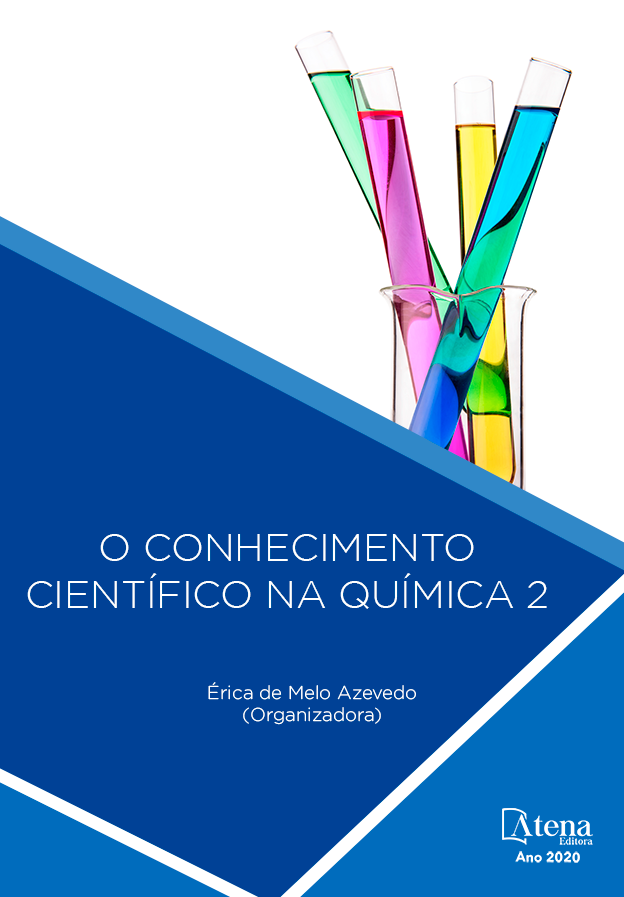
DEGRADAÇÃO DA TETRACICLINA EM MEIO AQUOSO EMPREGANDO PROCESSOS OXIDATIVOS AVANÇADOS E AVALIAÇÃO DO EFEITO DE INIBIÇÃO SOBRE Escherichia coli
Em decorrência do crescimento da população mundial, o consumo de medicamentos tem aumentado de forma significativa, o que tem resultado na inserção dessas substâncias no meio ambiente. Um dos grupos de fármacos residuais que merecem atenção é o dos antibióticos devido ao seu potencial efeito no desenvolvimento de bactérias resistentes no meio ambiente. A proposição de técnicas de tratamentos voltadas a mitigação desses novos poluentes coloca-se como uma etapa fundamental para a manutenção dos recursos hídricos. Nessa direção, os processos Oxidativos Avançados (POAs) têm surgido como uma tecnologia promissora em função do seu forte poder oxidante. Este trabalho teve por objetivo estudar a degradação do antibiótico tetraciclina em matriz aquosa sintética empregando os processos fotocatálise homogênea (UV/H2O2/Fe2+) e heterogênea (TiO2/H2O2/UV). As condições experimentais forma otimizadas por delineamento composto central rotacional (DCCR). Os experimentos foram conduzidos em um reator em escala laboratorial, com sistema em batelada, constituído por quatro recipientes de 250 mL, equipado com quatro lâmpadas de mercúrio de 15 W. Obtiveram-se como melhores condições de degradação pH = 4, [H2O2] = 25 mg L-1 e [Fe2+] = 15 mg L-1 na fotocatálise homogênea e pH = 4, [H2O2] = 51 mg L-1 e [TiO2] = 0,23 g L-1 para a fotocatálise heterogênea. As cinéticas dos dois tratamentos correspondem ao modelo de primeira-ordem com K2 = 0,007 min- 1 e K2 = 0,02 min-1 respectivamente. No teste de inibição com Escherichia coli observou-se menor efeito ativo após os tratamentos de degradação empregados. Os tratamentos fotocatálise homogênea (UV/H2O2/Fe2+) e heterogênea (TiO2/H2O2/UV) são promissores no tratamento de águas e efluentes contaminados com o fármaco tetraciclina.
DEGRADAÇÃO DA TETRACICLINA EM MEIO AQUOSO EMPREGANDO PROCESSOS OXIDATIVOS AVANÇADOS E AVALIAÇÃO DO EFEITO DE INIBIÇÃO SOBRE Escherichia coli
-
DOI: 10.22533/at.ed.63120201110
-
Palavras-chave: Micropoluentes. Fármacos residuais. Resistência antimicrobianos. Fotocatálise.
-
Keywords: Micropollutants. Residual drugs. Antimicrobial resistance. Photocatalysis
-
Abstract:
As a result of the growth of the world population, the consumption of medicines has increased significantly, which has resulted in the insertion of these substances in the environment. One of the groups of residual drugs that deserve attention is that of antibiotics due to their potential effect on the development of resistant bacteria in the environment. The proposition of treatment techniques aimed at mitigating these new pollutants is a fundamental step for the maintenance of water resources. In this direction, Advanced Oxidative processes (AOPs) have emerged as a promising technology due to their strong oxidizing power. This work aimed to study the degradation of the antibiotic tetracycline in a synthetic aqueous matrix using the homogeneous (photo-Fenton) and heterogeneous (TiO2/H2O2/UV) photocatalysis processes. The experimental conditions were optimized by a central rotational composite design (CRCD). The experiments were conducted in a laboratory scale reactor, with a batch system, consisting of four 250 mL containers, equipped with four 15 W mercury lamps. The best degradation conditions were obtained pH = 4, [H2O2] =5 mg L-1 and [Fe2 +] = 15 mg L-1 in homogeneous photocatalysis. For heterogeneous photocatalysis, pH = 4, [H2O2] =51 mg L-1 and [TiO2] = 0.23 g L-1 were the best conditions. The kinetics of the two treatments correspond to the first-order model with K2 = 0.007 min-1 and K2 = 0.02 min-1, respectively. In the Escherichia coli inhibition test, less active effect was observed after the degradation treatments used. The homogeneous (photo-Fenton) and heterogeneous (TiO2/H2O2/UV) photocatalysis treatments are promising in the treatment of water and effluents contaminated with the drug tetracycline.
-
Número de páginas: 25
- Marcia Antônia Bartolomeu Agustini
- Felipe Augusto Barbieri
- Leticia Maria Effting
- Cesar Augusto Kappes
- Kevin Augusto Ferreira
- Ismael Laurindo Costa Junior


